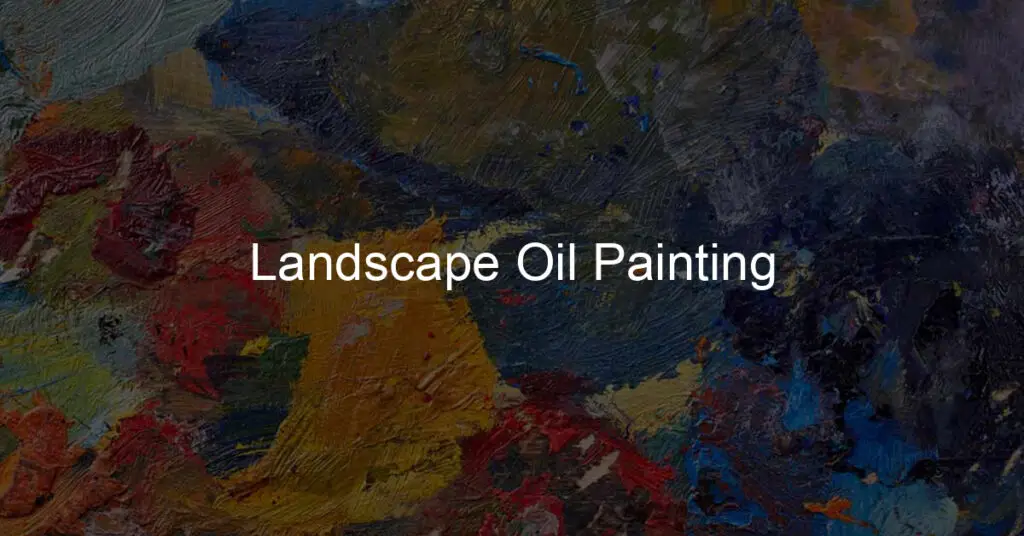The Rich History of Landscape Oil Painting
Landscape oil painting has a long and illustrious history that dates back to the European Renaissance. Initially, landscapes were often relegated to the background of paintings, serving as a backdrop to human activities. However, over time, landscapes evolved to become the primary subject of many works, with the 17th-century Dutch painters leading this transition.
Romanticism in the 19th century further popularized the genre, as artists like JMW Turner and John Constable focused on the emotional response to nature. Landscape painting then evolved through different artistic movements like Impressionism, Post-Impressionism, and Abstract Expressionism, with artists continually challenging traditional notions and experimenting with new techniques and perspectives.
Understanding the Basics of Oil Paints
Oil paints are comprised of pigments suspended in a medium of drying oil, commonly linseed oil. They are favored by many artists due to their flexibility, depth of color, and longer drying time, which allows for changes and corrections to be made during the painting process.
The nature of oil paints also enables a range of different effects, from thin glazes to thick, impasto strokes. Understanding the basic properties of oil paint—how it mixes, its transparency or opacity, drying times, and the impact of different mediums and solvents—is fundamental to mastering landscape oil painting.
Selecting Your Landscape: From Inspiration to Canvas
The first step in landscape oil painting is selecting the scene you wish to capture. This could be inspired by your immediate surroundings, a place visited, or a scene from your imagination. Consider factors like the composition, color palette, and the mood you wish to evoke.
Sketching and taking photographs of the scene can serve as valuable references when translating your vision onto the canvas. Remember, painting is an interpretation, not a replication. Thus, it’s perfectly acceptable to modify elements for aesthetic purposes.
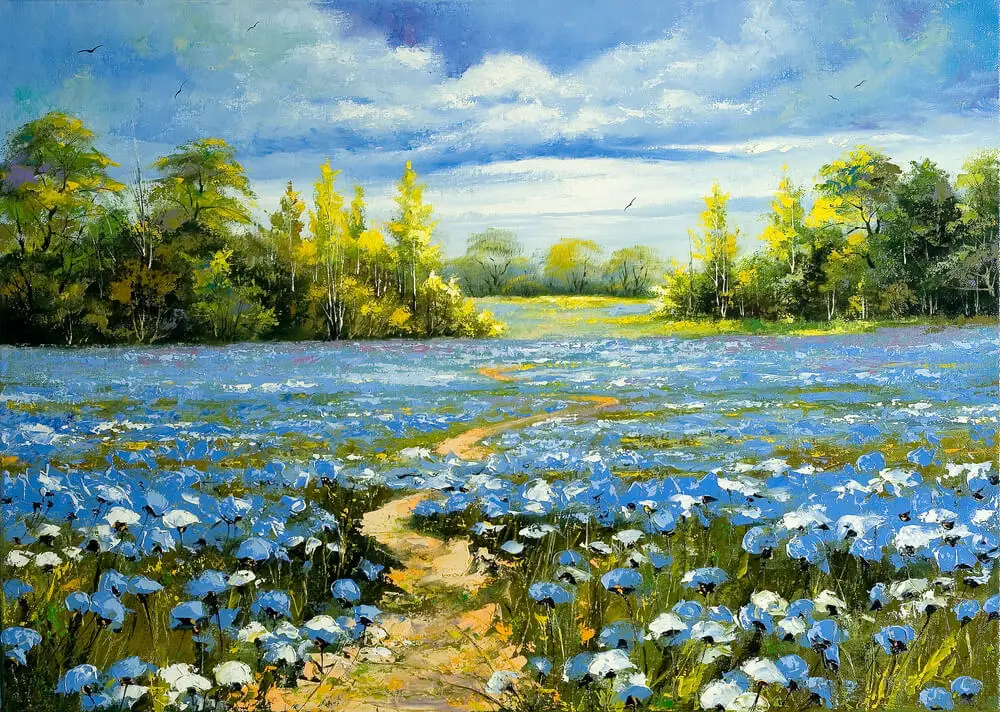
Mastering the Art of Perspective in Landscape Painting
Perspective is key to achieving a sense of depth and distance in landscape painting. There are two fundamental forms of perspective: linear and atmospheric. Linear perspective involves the use of converging lines to depict the way objects appear smaller as they recede into the distance.
Atmospheric perspective, on the other hand, involves the subtle fading of colors and reduction of contrast to suggest distance. Mastering these techniques can help create a convincing illusion of space and depth in your landscape paintings.
The Role of Light and Shadow in Landscape Oil Painting
Light and shadow play an integral role in shaping the mood and atmosphere of a landscape painting. The direction, intensity, and color of light can drastically alter the perception of the scene, and understanding how light interacts with different surfaces is crucial.
Shadows, in contrast, add depth and solidity to objects. Artists often use warm tones for light areas and cool tones for shadows to create a sense of realism. Observing and studying real-world lighting conditions can significantly improve the depiction of light and shadow in your paintings.
Choosing the Right Palette for Your Landscape
The color palette of your landscape painting can drastically affect the overall mood and aesthetic of the piece. Some artists opt for a limited palette, using only a few colors and their mixtures, to maintain color harmony throughout the painting.
Others may prefer a more diverse palette to portray a range of hues and tones. Additionally, understanding color theory, such as complementary and analogous colors, can help enhance the visual impact of your painting.
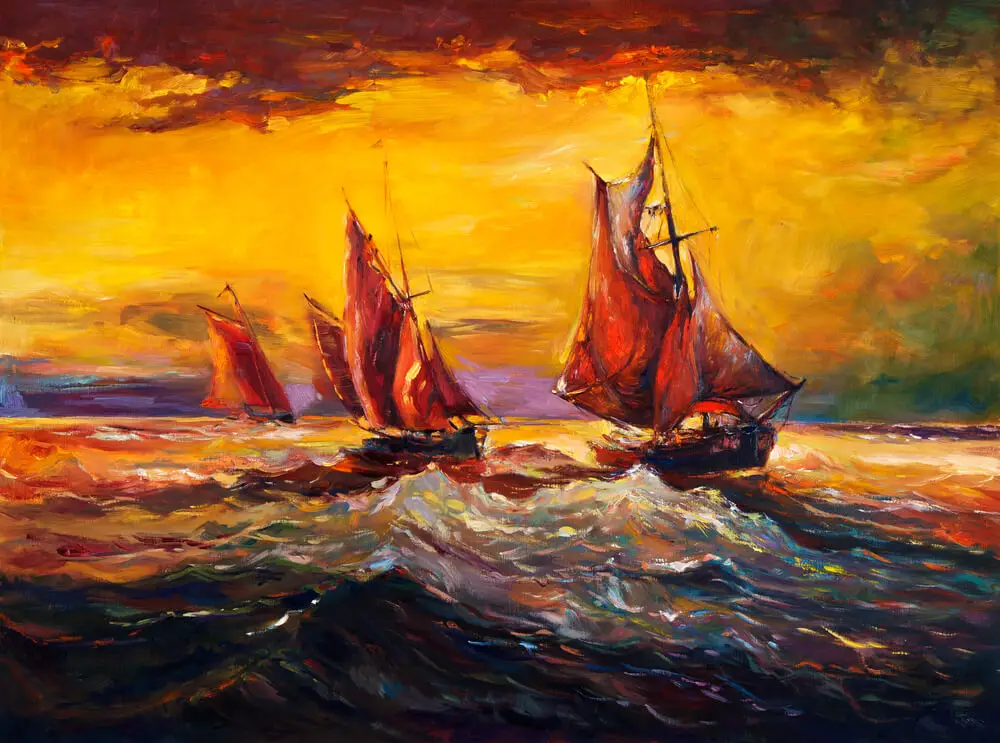
Techniques for Painting Different Natural Elements
Landscape oil painting often involves portraying a variety of natural elements—such as trees, grass, rocks, water, and clouds. Each of these elements requires specific techniques to capture their unique textures and appearances. For example, using loose, vertical brush strokes can suggest the texture of tree bark, while short, dappled strokes can be used to depict
grass. Techniques like scumbling or dry brushing can help simulate rocky surfaces, while smooth horizontal strokes and subtle glazes can create the illusion of calm water.
Creating Depth and Atmosphere: Techniques for Sky and Clouds
The sky often sets the tone of a landscape painting, and it plays a crucial role in creating depth and atmosphere. To paint skies effectively, consider the time of day and weather conditions you want to portray.
For instance, warm hues of red and orange could be used for a sunset, while a mixture of blues and whites could depict a clear, sunny day. Clouds add further depth and interest to the sky. The key to painting clouds is capturing their fluffy, ethereal quality through soft, blended strokes and a play of light and shadow.
Detailed Techniques for Painting Trees and Foliage
Trees and foliage are common elements in landscape painting, and their accurate depiction can add a sense of realism to your work. When painting trees, it’s important to consider their overall shape, the direction of light, and the texture of their bark and leaves.
Using varied brush strokes can help create texture, and layering different tones of green can suggest depth in the foliage. Don’t forget to include shadows and highlights to indicate the volume and form of the trees.
Exploring the Techniques for Painting Water in Landscapes
Water can be one of the most challenging elements to paint due to its reflective nature and constant movement. The key is to observe real water bodies closely and understand how they reflect light and the surrounding environment. Still water often acts like a mirror, reflecting the sky and nearby objects.
Moving water, like streams or waves, requires a dynamic approach, with brush strokes following the direction of the water flow. Additionally, transparency and the visibility of underwater elements can also contribute to the overall effect.
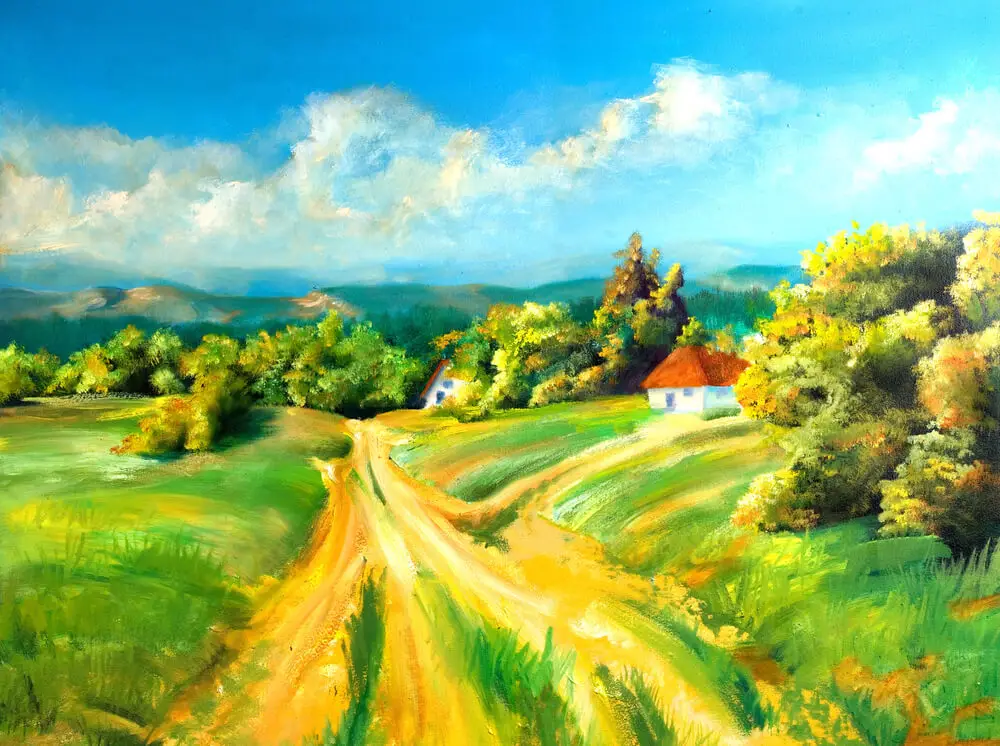
Common Challenges in Landscape Oil Painting and How to Overcome Them
Like any artistic endeavor, landscape oil painting comes with its share of challenges. These could range from technical issues, like achieving the right perspective or capturing the play of light, to more subjective problems, like choosing a compelling composition or color scheme.
Patience, practice, and perseverance are essential in overcoming these hurdles. Additionally, seeking feedback from fellow artists, attending workshops, and studying the works of masters can provide valuable insights and solutions.
The Use of Textures in Landscape Oil Painting
Texture in landscape oil painting can greatly enhance the overall sensory experience of the viewer. It can be achieved in a variety of ways, such as through the thickness of the paint (impasto), the type of brush strokes used, or by incorporating materials like sand or sawdust into the paint.
You can also create visual texture through the use of color and tonal variations. However, it’s important to strike a balance, as too much texture can overwhelm the viewer and distract from the overall composition.
Incorporating Wildlife into Your Landscape Paintings
Adding wildlife can bring a landscape painting to life, offering a dynamic element that also reflects the biodiversity of the place. The key to incorporating wildlife effectively is to keep the scale and perspective correct.
These elements should be in harmony with the rest of the painting, neither too prominent nor too insignificant. Remember, wildlife includes not only larger animals but also smaller creatures and birds, which can add detail and interest to your landscape.
Famous Landscape Oil Painters and Their Influence
Several famous painters have left a significant impact on landscape oil painting. Artists like Claude Monet, Vincent van Gogh, and J.M.W. Turner, to name a few, revolutionized the genre with their unique styles and techniques.
Studying their works can provide a wealth of inspiration and learning. For instance, Monet’s Impressionistic landscapes can teach us about capturing transient effects of light, while Van Gogh’s expressive style
highlights the emotional power of color and brushwork. Turner’s paintings often exhibit masterful rendering of atmospheric perspective and light. Understanding the artistic choices these painters made can help deepen your own approach to landscape oil painting.
The Process of Finishing and Preserving Your Landscape Oil Painting
Once your landscape oil painting is complete, the process of finishing and preserving it begins. This includes letting the painting dry thoroughly, which can take several days to weeks due to the nature of oil paint. Then, a layer of varnish is often applied to protect the painting from dust and UV light, and to enhance the vibrancy of the colors.
However, it’s important to wait until the paint has completely dried before applying varnish, as doing it too soon can lead to cracking or yellowing over time. Finally, proper handling and storage, such as avoiding direct sunlight and extreme temperatures, are vital to ensure the longevity of your artwork.
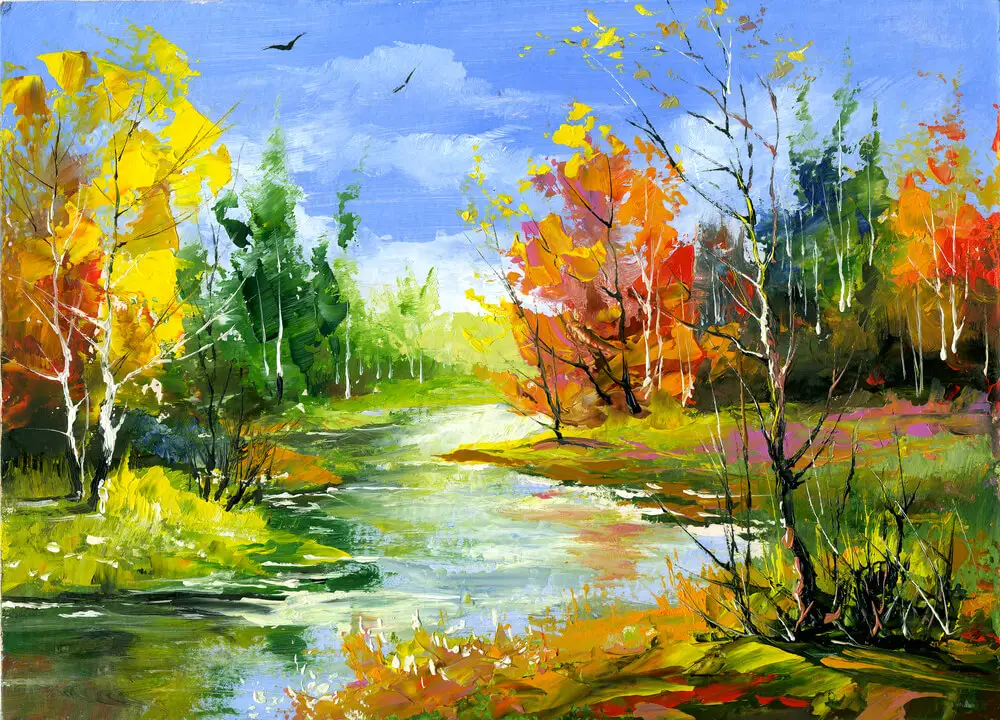
Conclusion
Mastering the art of landscape oil painting is a journey that involves understanding its rich history, the nature of oil paints, and the various techniques and perspectives involved in creating a compelling piece of art.
This process includes everything from choosing the right landscape and color palette to accurately depicting different natural elements and incorporating wildlife. We also discussed the importance of observing and understanding light, shadow, and texture, and how these can significantly enhance the depth, mood, and overall aesthetic of your painting.
Moreover, we highlighted the significance of studying the works of famous landscape oil painters to gain inspiration and learn from their unique styles and techniques. Lastly, we underlined the critical steps involved in finishing and preserving your artwork to ensure its longevity.
With patience, practice, and continuous learning, you can refine your skills and create captivating landscape oil paintings that are not only visually pleasing but also a testament to your artistic journey.

